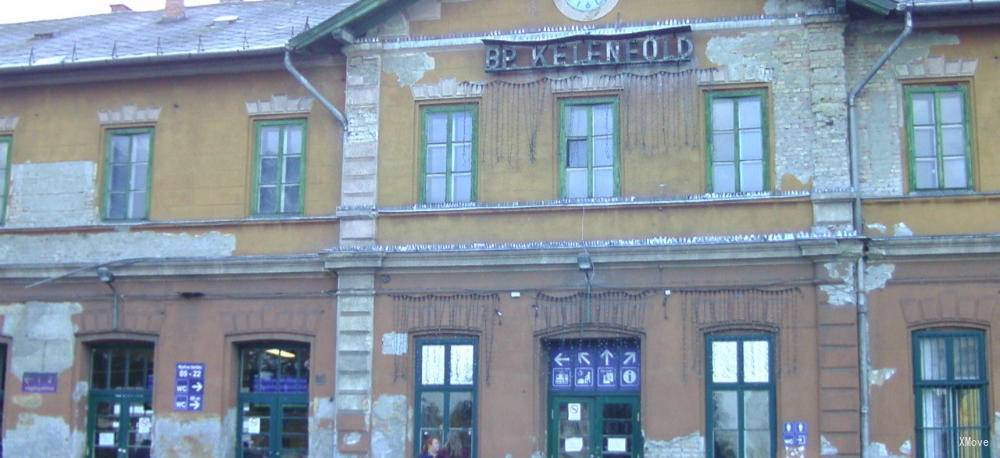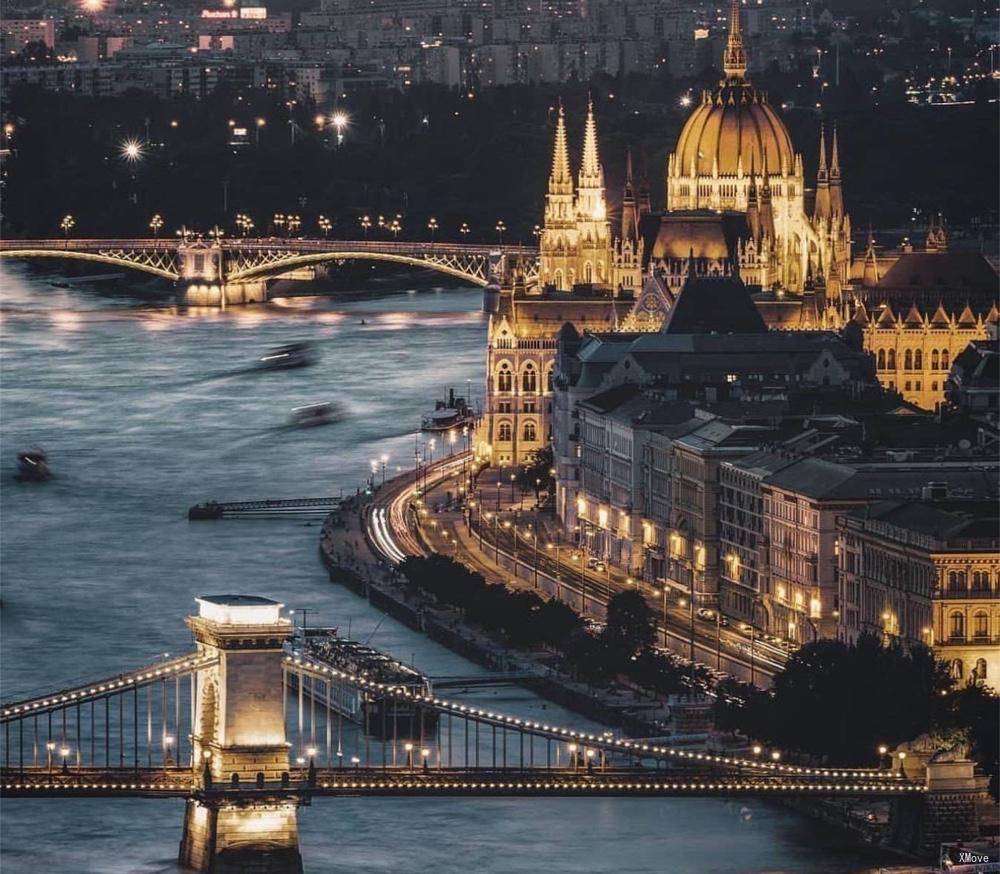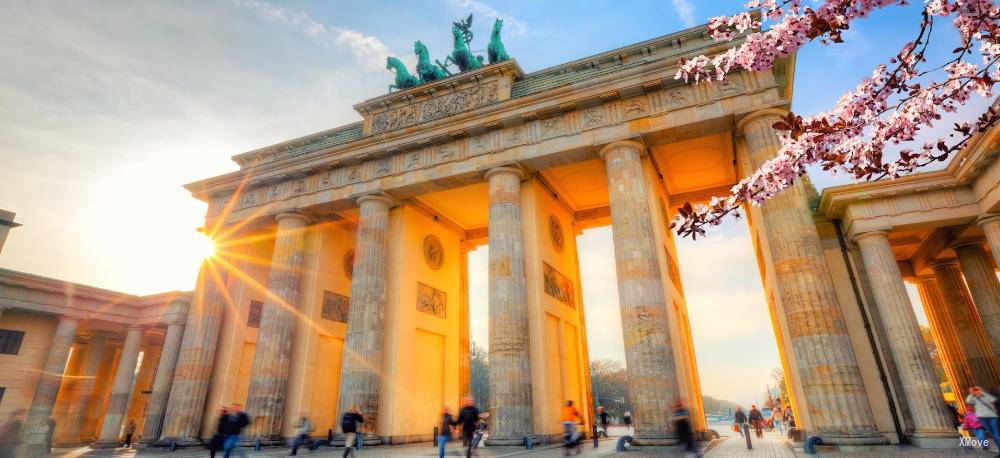Budapest Kelenfold to Berlin: Trains, Buses, Fares, Today's Connections, Routes, Duration, Types of Trains, Station Guides, Tips, Journey
Hungary Train Tickets
Scan QR code, download G2Rail App to see Budapest Kelenfold's more live update, station guide, plan and photos



Train schedule Budapest Kelenfold(Budapest Kelenföld) to Berlin
Popular train routes departing from Budapest Kelenfold(Budapest Kelenföld)
* Parndorf Bhf Central(Parndorf Bhf (Main))
* Florence(Firenze)
* Split
* Venice Mestre(Venezia Mestre)
* Ljubljana
* Bratislava Hlavná Stanica(Bratislava Hl.St.)
* Kolin(Cz)(Kolín)
Popular train routes arriving in Budapest Kelenfold(Budapest Kelenföld)
* Nordhausen
* Linz Central(Linz Hbf)
* Kiev
* Břeclav
* Bratislava Hlavná Stanica(Bratislava Hl.St.)
* Krakow Głowny(Kraków Główny)
* Bucuresti Nord Gara B (Basarab,Bucharest)
Popular train routes departing from Berlin
* Dresden Central(Dresden Hbf)
* Krefeld Central(Krefeld Hbf)
* Paris East(Paris Gare De L’est)
* Hamburg Central(Hamburg Hbf)
* Karlsruhe Central(Karlsruhe Hbf)
* Bremen Central(Bremen Hbf)
* Frankfurt(M) Airport Fernbf(Frankfurt(M) Flughafen Fernbf)
Popular train routes arriving in Berlin
* Essen Central(Essen Hbf)
* Amsterdam Sloterdijk
* Metz Ville
* Berlin
* Dresden Central(Dresden Hbf)
* Frankfurt Main Sued(Frankfurt(Main)Süd)
* Recklinghausen Central(Recklinghausen Hbf)

Budapest Kelenfold
Introduction
Karen Ford Railway Station is the fourth busiest train station in Budapest (after Keleti pu, Délipu and Nyugati pu). It opened in 1861 and is located in the southwest of the city centre, in the XI district of the Újbuda or Kelenföld suburb.
Today, the Kelenföld station is very busy, and almost all passenger and cargo services passing through T ransdanubia operated by the Hungarian Railway Company pass through here. The station is the terminus of Budapest Metro Line 4, which was commissioned on March 28, 2014. Next to the station is a suburban Volánbusz bus terminal.
Transfer to the subway
Many trains to and from the Keleti Railway Station in Budapest pass at the Karen Ford Railway Station in Budapest. Keleti is close to the city centre and the Kelenfold station is in the suburbs.
However, compared to the Keleti Station, Karen Ford's transportation to the city centre is easier - especially if you have heavy luggage. In recent years, Karen Ford has been modernized and has easy access to Line 4 of the Budapest Metro.
Unlike Keleti, all passengers have free access to the Karen Ford underground station. Subway tickets can be purchased from purple and white ticket vending machines instead of yellow ticket vending machines. Metro machines accept coins and credit/debit cards.
Line 4 is at SzentGellérttér (adjacent to the Gellert bath), Fovam Ter (near the food market and the Kalvin Ter in the city centre) with a station and close to the Hungarian National Museum.
The connection can be found on the Kalvin Ter on line 3 at the DeákFerenctér station in the city centre. Line 4 also serves the Keleti station, but you can save time by taking a subway round trip to Karen Ford.
This is because the train from Kailun Ford to Keleti Station takes approximately 12-15 minutes to reach the destination. So when you are ready to leave the train in Keleti, you may already be in the centre of Budapest.
Budapest Kelenfold - Station Guide | Departures and Arrivals | Popular Routes
Budapest (, Hungarian pronunciation: [ˈbudɒpɛʃt]) is the capital and the most populous city of Hungary, and the tenth-largest city in the European Union by population within city limits. The city has an estimated population of 1,752,286 over a land area of about 525 square kilometres (203 square miles). Budapest is both a city and county, and forms the centre of the Budapest metropolitan area, which has an area of 7,626 square kilometres (2,944 square miles) and a population of 3,303,786, comprising 33% of the population of Hungary.The history of Budapest began when an early Celtic settlement transformed into the Roman town of Aquincum, the capital of Lower Pannonia. The Hungarians arrived in the territory in the late 9th century. The area was pillaged by the Mongols in 1241. Buda, the settlements on the west bank of the river, became one of the centres of Renaissance humanist culture by the 15th century. The Battle of Mohács, in 1526, was followed by nearly 150 years of Ottoman rule. After the reconquest of Buda in 1686, the region entered a new age of prosperity. Pest-Buda became a global city with the unification of Buda, Óbuda, and Pest on 17 November 1873, with the name 'Budapest' given to the new capital. Budapest also became the co-capital of the Austro-Hungarian Empire, a great power that dissolved in 1918, following World War I. The city was the focal point of the Hungarian Revolution of 1848, the Battle of Budapest in 1945, and the Hungarian Revolution of 1956.Budapest is an Alpha − global city with strengths in commerce, finance, media, art, fashion, research, technology, education, and entertainment. It is Hungary's financial centre and was ranked as the second fastest-developing urban economy in Europe. Budapest is the headquarters of the European Institute of Innovation and Technology, the European Police College and the first foreign office of the China Investment Promotion Agency. Over 40 colleges and universities are located in Budapest, including the Eötvös Loránd University, the Semmelweis University and the Budapest University of Technology and Economics. Opened in 1896, the city's subway system, the Budapest Metro, serves 1.27 million, while the Budapest Tram Network serves 1.08 million passengers daily.Among Budapest's important museums and cultural institutions is the Museum of Fine Arts. Further famous cultural institutions are the Hungarian National Museum, House of Terror, Franz Liszt Academy of Music, Hungarian State Opera House and National Széchényi Library. The central area of the city along the Danube River is classified as a UNESCO World Heritage Site and has several notable monuments, including the Hungarian Parliament, Buda Castle, Fisherman's Bastion, Gresham Palace, Széchenyi Chain Bridge, Matthias Church and the Liberty Statue. Other famous landmarks include Andrássy Avenue, St. Stephen's Basilica, Heroes' Square, the Great Market Hall, the Nyugati Railway Station built by the Eiffel Company of Paris in 1877 and the second-oldest metro line in the world, the Millennium Underground Railway. The city also has around 80 geothermal springs, the largest thermal water cave system, second largest synagogue, and third largest Parliament building in the world. Budapest attracts 4.4 million international tourists per year, making it a popular destination in Europe.
Budapest - Guide, Attractions, Tours, Sightseeings | Train from/to Budapest | Popular RoutesBerlin
City Overview
As the capital, Berlin's position in Germany is unquestionable. For travellers, you can see the Brandenburg Gate (Brandenburger Tor), the Reichstag, the Bundeskanzleramt, etc., representing the German state in Berlin, and more, seeing the history of Germany. In particular, the sin and trauma of World War II and the division and opposition of the Cold War. The Berliner Mauer has been overthrown for more than 20 years, and the East German-Western point has long been a history, but Berlin still retains many historical sites and has created many museums to teach people how to learn. The remains of the Berlin Wall, the East Galery, the reserved Checkpoint Charlie, the newly built Holocaust-Mahnmal, and so on, are all contemplative places.
Berlin is also one of Germany's art centers, and there are more museums displaying the historical and artistic treasures of Germany and the world. The Museuminsel has a lot of essence. At the same time, Berlin is also a very modern and open city, which is not only reflected in the modern city. You can taste the tolerance and vitality of Berlin among the exotic costumes of the pedestrians and the dishes from around the world that you can taste. The elegant Unter den Linden, the expansive Tiergarten and the classical Schloss Charlottenburg are great places to slow down and relax.
Must visit attractions
- ##### Brandenburg Gate Brandenburger Tor
The Brandenburg Gate is a symbol of Berlin and a national symbol of Germany. This neoclassical sandstone building, built in 1791, is based on the Acropolis city gate. On the top of the door is a bronze statue of a four-wheeled carriage of the goddess of victory with wings, the scepter in the hands of the goddess. The oak garland, the iron cross and the winged eagle all symbolize the victory of the war. The Brandenburg Gate faces east, and its east is the heart of Berlin's Old Town, the only remaining Berlin gate. The Brandenburg Gate has stood here for more than two hundred years and has witnessed the rise and fall of German history. During the split of the East and West Germany, the Berlin Wall was erected on the west side of the Brandenburg Gate, and no one passed for decades. Today's city gate and the surrounding Pariser Platz are the most recent renovations that have been completed since the end of the Cold War. The buildings on the Paris Square are also very popular, with the recently completed US Embassy and the Hotel Adlon, which has been visited by countless celebrities.
Transportation: Light rail/subway: S1/S2/S25/U55 line, Brandenburger Tor station. End of the west end of Unter den Linden. * ##### Berlin Museum Island Museum Island
Museum Island in Berlin is a small island that brings together five museums. Built between 1824-1930. Due to the commemorative significance of culture and architecture, it was designated a World Heritage Site by UNESCO in 1999. The five museums are: the old museum in Berlin and the new museum, the National Gallery, the Bode Museum and the Pergamon Museum. Among them, the large-scale buildings in the Pergamon Museum are among the most famous. Museum Island brings together the best of German museums, such as the Pergamon Museum, which shows the history of ancient Egypt, the National Painting Gallery, which houses the works of world masters, and the German Museum of History. Museum Island is located in the former East Berlin area. At that time, due to economic difficulties, the major museums on the island were in disrepair and were ruined. After the reunification of Germany and Germany, the German government invested a large amount of money to re-maintain all the buildings on the island.
Transportation: Take the underground U6 and get off at Friedrichstraße; take the city railways S1, S2, S25 to Friedrichstraße or S5, S7, S75 and get off at Hackescher Markt.
- ##### Berlin German History Museum Deutsches Historisches Museum
The German Museum of German History in Berlin was founded in 1987 by German Chancellor Helmut Kohl and Berlin Mayor Dipgen on the occasion of the 750th anniversary of the founding of Berlin. It is located in the heart of Berlin, the oldest building in Berlin under the Bodhi Tree Street. In 2004, the new wing of the museum designed by IM Pei-Ming was completed. In 2006, after the restoration of the armory building, the permanent exhibition was opened to the public with the theme “Image and Witness of German History of Two Thousand Years”.
traffic: Subway: U2/U5/U8, U-Bhf Alexanderplatz Light rail: S5/S7/S9/S75, S-Bhf Hackescher Markt station Tram: M4/M5/M6, Spandauer Straße Bus: 100/200, Am Lustgarten Station
- ##### Berlin Wall Ruins Memorial Park Gedenkstätte Berliner Mauer
Most of the Berlin Wall, which has existed for more than 40 years, has now been overthrown, and the existing sections (such as the East Side Gallery) have not seen the original appearance of the year. Only the 220-meter-long wall preserved in this heritage park allows you to see the original Berlin Wall. You will find that the Berlin Wall is not just a wall, but a set of blockades consisting of a lookout tower, concrete walls, open areas and anti-vehicle trenches. There are various exhibitions in the open space to tell the story of the split period. You can also climb the tower observation deck to look at the entire wall structure.
traffic: Light rail S1/S2/S25 line, Nordbahnhof station
Gourmet & Accommodation & Shopping
- ##### Gourmet
Typical German restaurant dishes are basically sausages, potatoes, grilled meats and sauerkraut. Specifically, there are boiled pork feet in northern Germany, Berlin's favorite curry sausages, and traditional German family recipes. The tastes from all over the world are here, making it a great motivation for people to visit Berlin.
- ##### Accommodation
Berlin is a modern, traditional and rebellious city. Its spirit is unveiled in the hotel's diverse style. There is a trendy five-star hotel, a classic and elegant century-old brand, and a tasteful boutique hotel. Living in Berlin, you can have different enjoyments every day.
Most visitors choose to stay in the central area, where the famous Brandenburg Gate, the Reichstag, and the Berlin Wall are located. Exploring the Kingdom of Prussia and searching for the remains of World War II is a place that history and military fans must not miss. The city's subway, light rail, public transport and its development, as well as the world's oldest tram system, is recommended to live near public transportation stations, where it is extremely convenient.
- ##### Shopping
Berlin is the first big city in Germany, and various brand names are not difficult to find here. In Berlin, many of them are unique and unique shops. Many designers also offer privately-tailored services. If you want to get out of your own style, you will have a lot to come to Berlin.
Urban traffic
The city of Berlin has developed traffic, S-Bahn, subway, bus and trams are densely woven like nets. It is very convenient to reach all the attractions. The official website is www.bvg.de, you can check the frequency above. Traffic to the neighbouring state of Brandenburg can also be found on the VBB (VerkehrsverbundBerlin-Brandenburg) website www.vbb.de.
Berlin - Guide, Attractions, Tours, Sightseeings | Train from/to Berlin | Popular Routes
Hungary Train Tickets
Scan QR code, download G2Rail App to see Budapest Kelenfold's more live update, station guide, plan and photos



Hot Journeys
* Helsinki(Helsinki) -> Rovaniemi(Rovaniemi)
* Frankfurt -> Paris
* Pisa -> Florence
* Frankfurt -> Stuttgart
* Busan(부산) -> Seoul(서울)
* Venice(Venezia) -> Rome(Roma)
* Rome(Roma) -> Naples
* Florence -> Milan
* Bratislava(Bratislava) -> Warsaw(Warszawa)
* Seoul(서울) -> Andong Si(안동시)
* Florence -> Rome(Roma)
* Cologne(Köln) -> Frankfurt Airport(Frankfurt Flughafen)
* Milan -> Venice(Venezia)
* Seoul(서울) -> Busan(부산)
* Venice(Venezia) -> Milan
* Munich(Müchen) -> Berlin(Berlin)
* Frankfurt Airport(Frankfurt Flughafen) -> Cologne(Köln)
* Stuttgart -> Frankfurt Airport(Frankfurt Flughafen)

